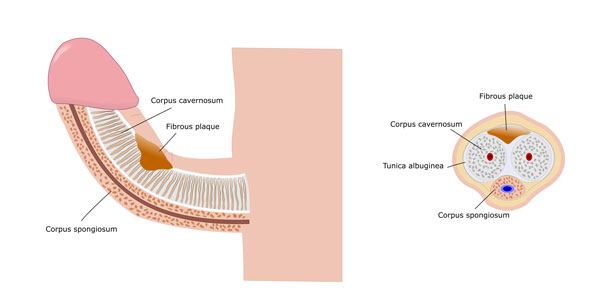What Is Peyronie's Disease?
What is Peyronie's disease is a question that many men who have experienced some penis problems ask.
Are you having painful erections or feeling pain in penis? Have you noticed penis curvature (bent penis or curved penis) or penis shrinkage? Have you had penis injury recently? Do you feel a lump inside your penis?
If the answer is yes to any of those questions, then you are right in trying to find out what is Peyronie's disease as you might have got it.
So... What Is Peyronie's Disease?
I have always felt the name Peyronie's disease (PD) to be somewhat misleading. You do not catch Peyronie's, nor can you “give it” to someone else, like your sexual partner.
However, the definition of disease is any abnormal conditions that affects your body, a medical condition associated with specific symptoms and signs, and that applies to the Peyronie's disease.
Peyronie's Disease Definition
There seems to be no official definition for what is Peyronie's disease and few of the definitions I have found are in “plain English”. So I am going to attempt to explain what is Peyronie's Disease in “layman's terms”.
The exact Cause Of Peyronie's Disease is not fully known or understood, nor why some men develop it but not others.
Peyronie's is considered to be caused by some kind of trauma or injury to the penis. This trauma can result in various penis problems, including damage to the penile tissues. Whenever your body tissue is damaged, the body activates a healing process.
Simply put, Peyronie's can be described as wound healing disorder. For some unknown reasons the tissues in the penis do not heal as they should.
When you have Peyronie's, the healing process overcompensates. Excess scar tissue forms in the layer (tunica albuginea) that surrounds the spongy erectile tissue (corpus cavernosum). This causes too much collagen to build up and form fibrous plaque (hard lump) in the penis.
Pictures of Peyronie's disease demonstrate this clearly. The below penis picture illustrates how the plaque forms in the penis, while Peyronie's Penis Photos show how real penises with Peyronie's disease look like.

Simply put, plaque (pronounced “plak”) is hardened scar tissue and it can cause deformity of the penis and lead to curved penis. Other common Symptoms Of Peyronie's include penile pain, indentation, loss of girth, and penis shrinkage.
Erectile Dysfunction is also very common among men with Peyronie's disease. It is estimated that between one to two third of all Peyronie's patients suffer from erectile problems. It is therefore important to take good care of your erectile health and if needed undergo erectile dysfunction treatment.
The question was what is Peyronie's disease? My “layman's term” Peyronie's disease definition is this:
Peyronie's disease is a scar tissue formation (plaque) in the penis that can cause various penis problems, most notably penis curvature as the scar tissue prevents the straightening of the penis.
There are two Peyronie's Stages, the acute phase and the chronic phase. The Peyronie's symptoms gradually develop during the acute phase that can last up to 12 - 18 months. The penis problems stabilize when you have reached the chronic phase.
There are some likely Peyronie's risk factors known but the link between them and developing Peyronie's has not been conclusively proven. Knowing these risk factors may still help you to prevent your Peyronie's disease from getting worse than it already is.
One of the risk factors is the relationship between Diabetes And Peyronie's Disease. Diabetes does not cause Peyronie's as such but Peyronie's is slightly more common in men with diabetes.
Research has also shown possible link between Peyronie’s and certain types of cancer.
Is There A Cure For Peyronie's Disease?
Unfortunately, there is no Peyronie's cure available. However, there are number of Peyronie's Treatment Options available. There is though no commonly agreed best Peyronie's treatment but some treatments have been shown to be more effective than others.
It is important to remember that no Peyronie's treatment can guarantee full recovery or significant improvements.
Some treatments work well for some Peyronie's patients but not for others. The results can depend on many factors, like how severe your penis problems are, your age and commitment to the chosen treatment.
The good news is that many Peyronie's sufferers (including me - see My Story), have received satisfying results from their treatments and can continue to enjoy good and healthy sex life.
The first step is however to see your doctor (if you have not done so already), and get a formal diagnosis for your penis problems, i.e. to confirm you have Peyronie's disease, not Congenital Curvature or any other medical condition.
Your doctor is also the best person to advice you about the Peyronie's treatment options available to you. I recommend preparing yourself before visiting your Doctor, as good preparation will help you to ask the right questions and to better understand the answers and explanations you get.
Now when the question what is Peyronie's disease is clear, let's have a look at the Peyronie's symptoms.



